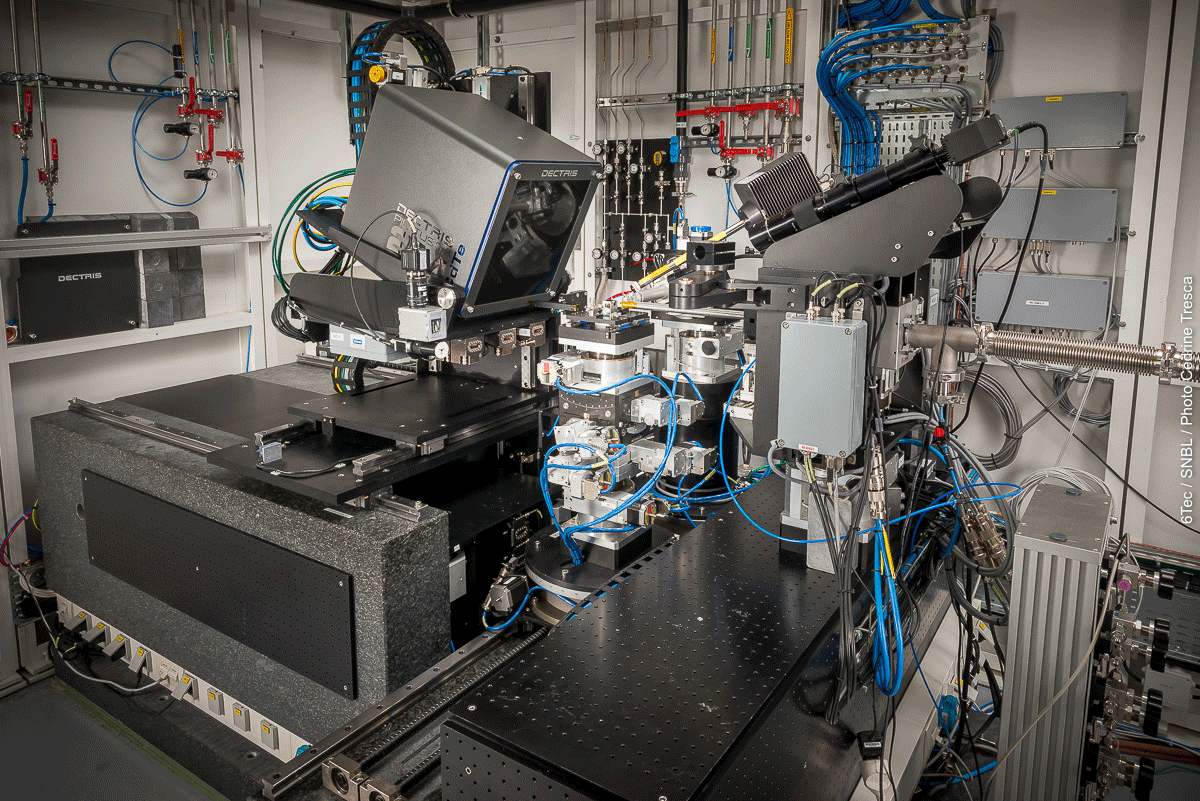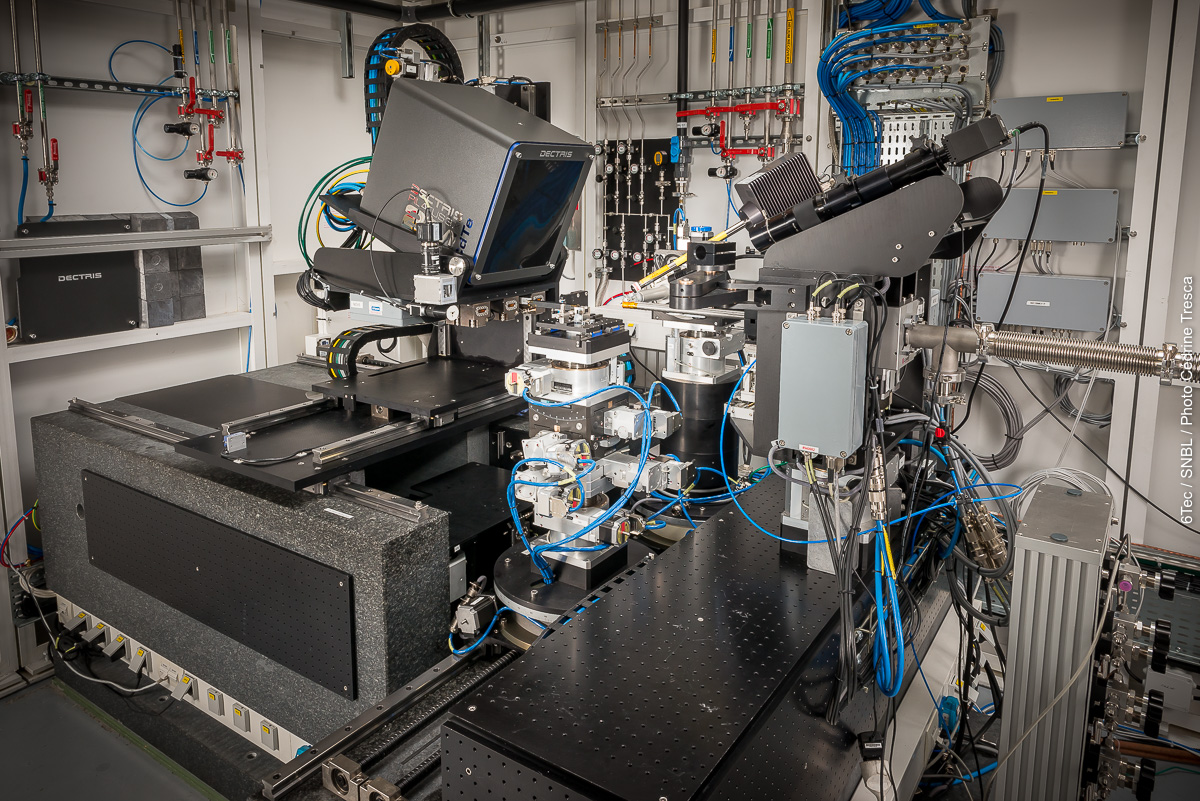BM31
BM31 Swiss Norwegian beamlines
Beamline characteristics
BM31 has two end stations in the experimental hutch, the newly installed (2022) endstation is specialized in combining X-ray Absorption Spectroscopy, Powder Diffraction, and Total scattering and works together seamlessly with the optics. The optics and endstation can automatically switch between various configurations. This enables measurements of XAS, HRPD, and Total scattering datasets in a combined time-resolved manner on the same sample under the same experimental conditions.
The second end station performs High-Resolution Powder Diffraction (HRPD).
A set of sample environments is available for temperature-dependent-, catalytic- and electrochemistry experiments as well as a gas distribution and analysis system.
Optics
|
Element
|
Description
|
| Monochromator | Air-bearing liquid nitrogen double-crystal monochromator |
| Monochromator crystals | 2 Flat Si[111] pair, Flat Si[311] pair and 2 sagittal focusing second crystals |
| Spectral range | 4 - 90 keV, ~40 and ~50keV focussed for XRD & PDF |
| Intrinsic resolution (DE/E) | Si[111]: 1.4 x 10-4 Si[311]: 0.3 x 10-4 |
| Spot size | up to 10mm H x 0.6mm V and focussed 50µm H x 300µm V |
Detectors
The following detectors can be automatically put into action during the execution of your experiment.
- A subset of 3 out of 16 pre-filled ionization chambers accessing the full energy range for transmission spectroscopy
- A Vortex SDD with XIA Falcon X fast digital multichannel analyzer electronics for fluorescence spectroscopy
- A PILATUS3 X CdTe 2M for XRD and PDF
Sample Environment
- Catalytic experiments can be performed with a high temperature 900 C, high heating rate, and low axial gradient capillary plug flow reactor combined with a gas distribution system including 4 mass flow controllers, a back pressure regulator, and a mass spectrometer.
- Electrochemistry experiments can be performed with a BioLogic 16-channel potentiostat.
- Low-temperature measurements down to 5K can be performed using a specially designed cryostat
with the sample in He atmosphere. Kapton windows allow measuring the samples in transmission
and fluorescence modes. Several samples can be mounted simultaneously on the sample holder
and measured one after the other using a linear translation stage. - High-temperature experiments can also be performed with a gas blower up to 750 C
High-Resolution Powder Diffraction endstation.
A 2-circle diffractometer is available for High-Resolution Powder Diffraction measurements. Each circle has a high-precision encoder mounted directly on the rotary axis. The diffractometer is currently equipped with 6 counting chains, meaning that 6 complete patterns are collected simultaneously, with an offset in 2-theta. The angular offset between the detectors has been kept very small (~1.1 deg) in order to keep the total data collection time to a minimum. A Si-111 analyzer crystal is mounted in front of each detector (Na-I scintillation counter), resulting in an intrinsic resolution (FWHM) of approx. 0.01 deg at a wavelength of 1 A. The available wavelength range for the instrument is 0.4 to 1.2 A.
Sample environment
Transmission (capillary) measurements can be performed between 5 and 1023 K. Available on the beamline: a cryostat for temperatures between 4 and 298 K and a furnace from room temperature 1000 C.
For users: please add the following to your acknowledgments:
The BM31 setup was funded by the Swiss National Science Foundation (grant 206021_189629) and the Research Council of Norway (grant 296087).


 The SNBL HRPD Diffractometer
The SNBL HRPD Diffractometer 


